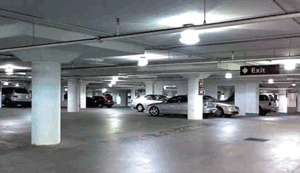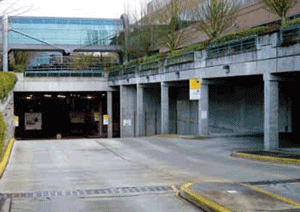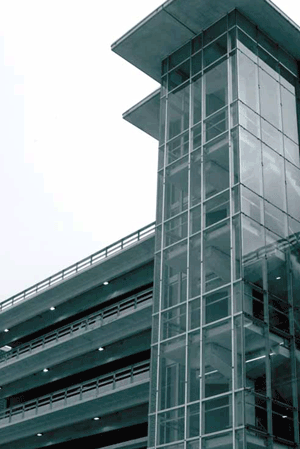Smart parking.
I know what you're thinking: «What could be smart about such a simple thing as a car park?»
In this article, we will give a brief overview of the systems and technologies that will help make a car park «smart».
We will also discuss how such a parking lot will expand the capabilities of the building's security service; store the information needed to track the movements of employees, facilitating personnel management, as well as clients and visitors; save people time and fuel spent looking for a parking space; and much more.
Let's first figure out what the difference is between «automated» parking lots and «smart» parking lots.
The following principle is used in automated parking lots: several elevator lifts and moving platforms (without operator intervention) place the car in a box. To leave the car in such a parking lot, you just need to drive onto the platform installed inside the elevator. Then you simply lock the car and go about your business.
The platform rotates 180 degrees (when you pick up your car, you just need to drive out), rises and rolls into the garage together with the car. These parking lots really use the space of a collective garage very effectively, because it requires less garage height and does not require any space for the car to drive out, or for the driver to walk between cars.
The cars are as if packed. This is an excellent solution for cities with their dense development, where the cost of land is extremely high.
“Smart” garages work on a different principle.
They use surveillance cameras, digital parking identifiers, sensors and software that will collect data on the cars parked and the availability of free spaces.
Processing such information will allow for more efficient management of parking space allocation, directing drivers to unoccupied parking slots. Such a system will identify car owners whose cars are parked, working in conjunction with other systems in the building complex.

How does it work in practice? At the entrance to the smart parking system, a speed bump is installed, which is necessary to reduce the speed of the car, as well as a magnetic detector that registers the presence of the car. Then a photo of the state number is taken.
The camera illuminates the number with infrared light (invisible to the human eye), and then takes a picture of it. The image is analyzed using OCR technology (Optical Character Recognition). This number is recorded and checked against the database. Other data is also recorded: date and time, the rented parking space and a photo of the driver.
After the car enters the parking lot, the system allocates a parking space to the car. Each parking space in the parking lot has a photo sensor that determines whether the space is occupied or not, and a light indicator. The photo sensors provide the system with information about how many spaces in the parking lot are free and where they are located.
A light indicator turns on above the designated parking space and the system gives the driver a digital parking space identifier to help find it. The car is delivered to the parking space and a photo sensor registers the car's appearance in the cell, notifying the car distribution system, which turns off the light indicator above the parking space.

After parking the vehicle, the driver goes out to do some business. When he returns and picks up the car, the sensors signal that the space is free.
Then the digital code helps the owner find his way to the exit, where the state number is scanned and recognized again.
The parking time is calculated and entered into the log. The parking fee is automatically displayed on the board. For those who prepay for parking, an automatic payment system is provided.
So what are the advantages of a smart car park?
Here are some of them:
• Efficiency.
The system provides real-time data on the number and location of free spaces. In this case, there is no need to drive around in circles looking for a free space — he can immediately go to the parking place. This reduces the parking time for the driver and reduces the level of pollution by harmful exhaust gases.
• Safety.
The system can check the state registration plate against the list of employees and visitors who have received authorization, which significantly increases the level of security.
• Service level (white and black list).
The state registration plate can be used to identify cars that require special maintenance or have special parking boxes, such as VIP cars (the so-called «white» list). A «black» list can also be used, which includes cars that are prohibited from entering the parking lot, or their appearance must be accompanied by an alarm or notification of certain people.
• Statistics and reports.
The system can generate lists based on certain criteria (for example, cars and drivers that leave their vehicles in the parking lot more often than others), and also generate statistical reports for certain time periods (day, hour, etc.).
• Communication with other systems.
The smart parking system can interact with other building systems.
For example, if an employee decides to come to the office after work, the light in the employee’s room will automatically turn on and the ventilation and air conditioning system will turn on, and as soon as the employee leaves the parking lot, all systems will turn off.
Combining systems in a building can raise not only their functionality to a new level, but also a fair assessment, even if it is just a parking lot for cars.
Today, to a greater extent than before, it is technology that determines how diverse the serviced facilities can be, as well as the amenities with which people will work, live, and even park cars.
